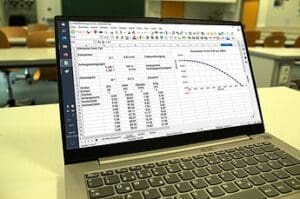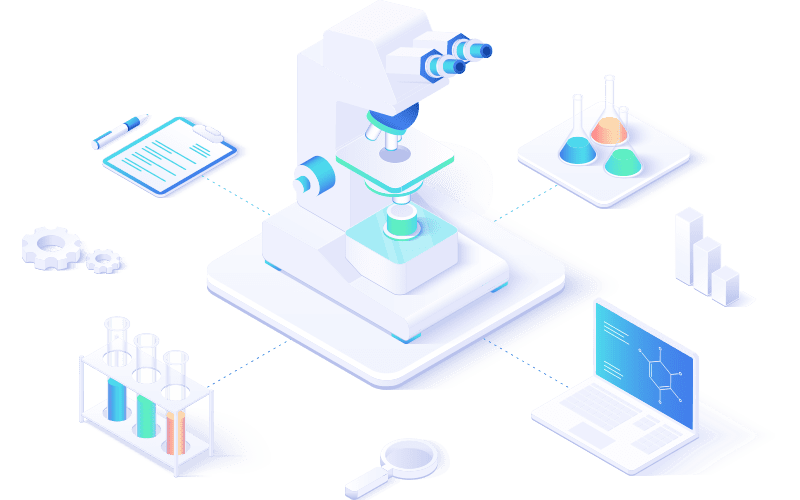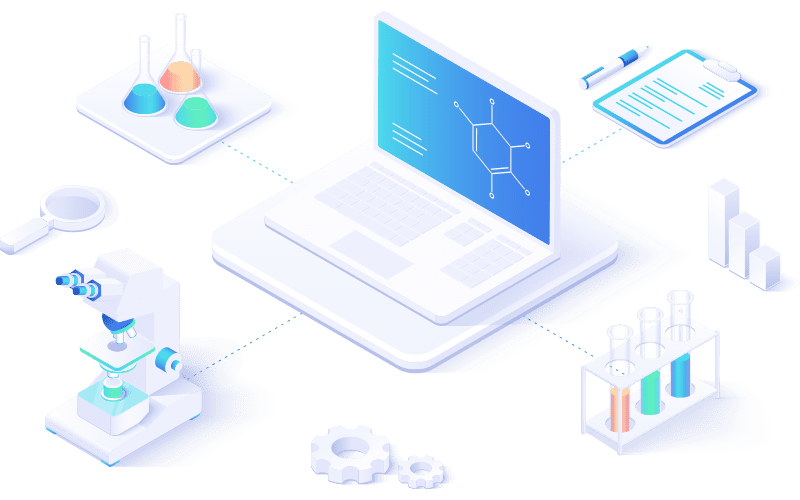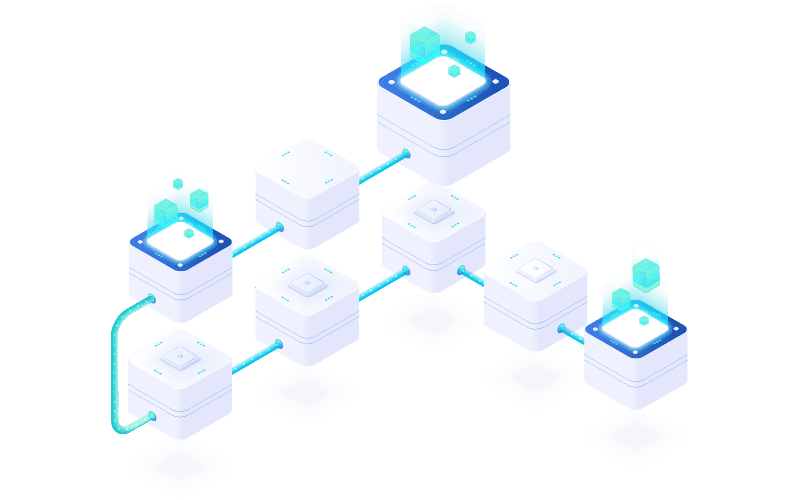
Examples of LIMS alternatives
A laboratory information management system (LIMS) is a modern solution to the increasingly demanding workflow needs of most laboratories, particularly those performing activities in regulated industries. However, laboratory work wasn’t always conducted with the help of such a software system, and a LIMS isn’t always the answer for a lab looking to manage its workflow and operations better. Whether it’s the simplicity of the lab’s operations or the perceived costs of acquiring, maintaining, and updating a LIMS (or even heavy stakeholder resistance to updating old familiar processes to more modern ones), other alternatives still exist for laboratories, including paper-based systems, spreadsheet software, database software, or enterprise resource planning (ERP) software. This section will briefly discuss those options, while the following section will address their potential deficiencies.
Paper-based systems
Before software-based systems, labs used laboratory notebooks, notepads, Xeroxed report templates, and instrument printouts (granted, a step up from recording pure observation) to document analytical and research processes. Even in 2023, we still find labs that stick to these older methods, which may work in some cases. These methods are considered low-cost, easily transportable, easy to copy (i.e., back up), relatively flexible to use (e.g., write, draw, chart, etc.), and easy to sign and date.[1] However, paper notes aren’t always easy to read, can be readily damaged or destroyed, can be challenging to search, require more manual time-consuming methods, and can be difficult to integrate with other paper-based data and information.[1]
Spreadsheets
As computing technology evolved and became more affordable, software makers were incentivized to develop relevant and approachable software solutions to solve businesses’ workflow challenges. Among these software solutions was the spreadsheet. Derived in concept from the paper-based ledgers accountants and traders would use, the electronic spreadsheet suddenly allowed businesses to perform calculations automatically, saving users time.[2] Laboratories picked up on this electronic, ledger-based approach to documenting experimental results and making routine analytical calculations. However, as labs of all types have fallen under greater scrutiny from regulators, the electronic spreadsheet method of documentation and calculation of analytical results shows inefficiencies and inadequacies, including difficulty in preventing changes to fields and maintaining an accurate representation of the who, what, when, and where of recorded values.
Databases
Databases also came into popularity with the advent of computing technology. Tabular and relational representation of data points, with the ability to assign labels to those data points, became useful for the electronic storage and retrieval of data.[3] Like spreadsheets, it’s unsurprising that some laboratories latched on to keeping track of experimental, analytical, and quality control [12] data in a database. However, these are best used for structured data. As electronic types of data and information have evolved into more sophisticated forms such as images, audio, and other unstructured formats, the traditional database shows its weaknesses.
ERPs
Compared to spreadsheets and databases, the ERP is a bit more modern software solution, specifically designed to help streamline and unify business processes across an entire organization. These systems were initially designed for larger enterprises such as banks, manufacturers, and insurance companies, helping them manage finances, assets, inventory and supply chain, training, and other business aspects. However, even today, most don’t have the functionality necessary to handle more laboratory-specific activities, stretching the ERP’s functionality to the limit. (Some savvy software vendors have built laboratory-specific modules for existing ERPs like open-source Odoo[4], but these appear to be few and far between.)
Deficiencies in most LIMS alternatives
A LIMS is an investment for any sized laboratory, whether it’s almost exclusively monetary (with some other organization doing a majority of the heavy lifting, as with a cloud-based solution) or some combination of financial and in-house resource expenditure (as with a self-hosted solution located on-premises, whether that solution is a commercial proprietary offering or an open-source offering). Even an open-source LIMS still requires the lab to lean on an employee or third-party consultant to set up, configure, and maintain the software (or even modify the source code) and maintain the local IT infrastructure to support it. The open-source route may make sense for small, single labs with a couple of instruments. Still, the lack of regulatory-driven functionality like an audit trail in all but a few open-source LIMS (e.g., SENAITE[5]) may significantly restrict the available options to such labs.
This raises what a lab typically sacrifices with LIMS alternatives such as paper notebooks, spreadsheets, databases, and ERPs. These LIMS alternatives rarely address regulatory and/or internal need for[1][6][7][8][9][10][11]:
- ensuring analytical results haven’t been maliciously or accidentally modified (such as with audit trails that clearly and properly maintain the metadata [13] surrounding an inputted value, as well as any changes made to it);
- clearly and accurately documenting a wide variety of data and metadata about a given sample or analysis;
- ensuring software tools like spreadsheets are validated;
- ensuring data is contemporaneous (i.e., “current”) and not fabricated post-analysis;
- maintaining data integrity beyond what audit trails provide;
- maintaining, archiving, and disposing of data and information for a designated period of time, whether it’s paper or electronic;
- ensuring recorded values are treated uniformly for all lab operations, using the same units, rounding rules, formulas, limits, etc.;
- maintaining the security of proprietary lab data and information, including methods, analytical values, and associated reports;
- ensuring accurate and timely analytical results that have been officially validated/approved by one or more individuals (with that validation/approval getting properly documented);
- ensuring timely retrieval of data and information to support decision-making and audits more readily;
- allowing more than one user to access, add, and modify lab data and information;
- supporting more timely recording of analytical values from instruments; and
- supporting the later conversion of paper-based data and information into structured, readable, and importable electronic formats.
This is not to say that paper-based laboratory notebooks, spreadsheets, databases, and ERPs can’t work for small, lightly regulated laboratories. However, as more laboratory activities across all industries gain additional regulatory oversight, and as clientele of said labs increasingly demand more timely, accurate, and defensible analytical results, today’s laboratories are under pressure to move beyond little printout slips from instruments, paper notebooks, controlled worksheets, and non-validated software tools that aren’t purpose-built for labs. Some LIMS vendors have recognized that not every lab needs a megalithic software solution—in turn offering slimmed-down, more affordable LIMS solutions—which is even more encouraging for small labs that want to take the next step towards improved workflows and greater data integrity.
The LabLynx ELab LIMS Solution
Selecting the right LIMS is a pivotal decision for laboratories of all sizes. The investment, whether primarily financial or a combination of financial and in-house resources, reflects the commitment to enhancing efficiency, data integrity, and compliance. While open-source LIMS options exist, they may pose limitations, particularly in meeting regulatory requirements such as implementing audit trails. The LabLynx ELab LIMS stands out as a highly strategic investment catering to laboratories of all sizes, offering a versatile solution to address a spectrum of needs.
In the face of increasing demands for efficient and compliant operations, the evolution from conventional practices to purpose-built LIMS solutions becomes a practical necessity and a strategic step towards ensuring sustained success in today’s dynamic laboratory landscape. ELab LIMS includes a wide variety of functionalities, including:
- Cloud-Based Flexibility: ELab LIMS provides a cloud-based solution, allowing for accessibility from anywhere with an internet connection. This flexibility is particularly advantageous for laboratories that prioritize remote access and collaboration.
- Configurability and Customization: ELab LIMS is configurable to meet different laboratories’ specific needs and workflows, accommodating labs of varying sizes. This adaptability allows users to tailor the system to their unique requirements, ensuring seamless integration into existing processes and that the LIMS will grow with the laboratory’s needs.
- User-Friendly Interface: The user interface of ELab LIMS is designed to be user-friendly, promoting ease of use for laboratory staff. An intuitive interface can enhance user adoption and overall efficiency in day-to-day operations.
- Comprehensive Data Management: The LIMS is equipped to handle various data and metadata associated with samples and analyses, such as sample management, workflow automation, maintaining data integrity, recording values uniformly, and supporting the later conversion of paper-based data into electronic formats.
- Quality Control: Built-in quality control features ensure adherence to regulatory standards and data integrity requirements, promoting compliance, accuracy, and reliability of your laboratory’s results.
- Reporting and analytics: This includes data visualization, trend analysis, and custom report generation. Advanced reporting and analytics capabilities provide insights into laboratory data, trends, and performance, supporting decision-making, process improvement, and regulatory reporting.
- Integration Capabilities: ELab LIMS supports integration with other laboratory systems, such as electronic laboratory notebooks (ELNs), enterprise resource planning (ERP) systems, and integration with laboratory instruments. Integration with other systems and instruments eliminates silos and allows for seamless data exchange, enabling efficient information flow, reducing data duplication, and enhancing overall laboratory operations.
- Audit Trail and Version Control: ELab LIMS includes audit trail functionality, addressing the need for regulatory-driven features with traceability of data changes, facilitating data auditing, supporting compliance audits, and protecting data integrity and accuracy.
- Data Security: Security measures such as user access controls, data encryption, and backup and recovery mechanisms protect sensitive laboratory data, support data integrity, and prevent unauthorized access or tampering while maintaining confidentiality and compliance with data protection regulations.
- Multi-User Collaboration: ELab LIMS allows more than one user to access, add, and modify lab data and information. This collaborative functionality promotes teamwork and can enhance overall operational efficiency.
- Support and training: Comprehensive support and training resources promote successful implementation, ongoing system maintenance, and efficient utilization of the LIMS solution, maximizing its benefits for the laboratory.
- Validation documentation: The availability of validation documentation supports the laboratory’s validation efforts while also establishing that the LIMS system meets regulatory requirements.
The LabLynx ELab LIMS is a strategic investment for laboratories, addressing critical needs such as regulatory compliance, data integrity, security, and efficient workflow. While alternative methods like paper notebooks, spreadsheets, and databases may suffice for smaller, lightly regulated labs, the limitations become evident in ensuring analytical integrity, data contemporaneity, and evolving regulatory demands. The ELab LIMS stands out by offering a tailored solution, bridging the gap between comprehensive functionality and affordability, and providing small labs an opportunity to enhance workflows and data integrity.
References
- Liscouski, J. (November 2023). Douglas, S.E. ed. “LII:A Science Student’s Guide to Laboratory Informatics”. LIMSwiki.org . Retrieved 13 December 2023. https://www.limswiki.org/index.php/LII:A_Science_Student%27s_Guide_to_Laboratory_Informatics
- Meikle, H. “The history of spreadsheets”. Sheetgo Blog . Retrieved 15 December 2023. https://blog.sheetgo.com/spreadsheets-tips/history-of-spreadsheets/
- Fortune, S. (17 December 2020). “A Brief History of Databases”. CS403: Introduction to Modern Database Systems. Saylor Academy. Retrieved 15 December 2023. https://learn.saylor.org/mod/page/view.php?id=21059
- “Odoo LIMS”. LogicaSoft SPRL. Retrieved 15 December 2023. https://www.logicasoft.eu/en_US/lims
- “SENAITE – Features”. SENAITE Foundation. Retrieved 13 December 2023. https://www.senaite.com/features
- Liscouski, J. (April 2022). “Improving Lab Systems: From Paper to Spreadsheets to LIMS” (PDF). LabLynx, Inc. Retrieved 13 December 2023. https://www.lablynx.com/wp-content/uploads/2023/03/Improving-Lab-Systems-From-Paper-to-Spreadsheets-to-LIMS.pdf
- Ferrero, M.S. (2007). “Chapter 8: GLP Documentation”. In Weinberg, Sandy. Good laboratory practice regulations. Drugs and the pharmaceutical sciences (4th ed ed.). New York: Informa Healthcare. pp. 223–240. ISBN: 9780849375842. https://books.google.com/books?id=JR5i0Nz5UWEC&pg=PA233
- AlTarawneh, Ghada; Thorne, Simon (2017). “A Pilot Study Exploring Spreadsheet Risk in Scientific Research”. arXiv. doi: 10.48550/ARXIV.1703.09785. https://arxiv.org/abs/1703.09785
- McDowall, R.D. (2020). “Are Spreadsheets a Fast Track to Regulatory Non-Compliance?”. LCGC Europe 33 (9): 468–76. Retrieved 13 December 2023. https://www.chromatographyonline.com/view/are-spreadsheets-a-fast-track-to-regulatory-non-compliance
- Ma, Ming-Wei; Gao, Xian-Shu; Zhang, Ze-Yu; Shang, Shi-Yu; Jin, Ling; Liu, Pei-Lin; Lv, Feng; Ni, Wei et al. (6 November 2023). “Extracting laboratory test information from paper-based reports” (in en). BMC Medical Informatics and Decision Making 23 (1): 251. doi: 10.1186/s12911-023-02346-6. ISSN: 1472-6947. https://bmcmedinformdecismak.biomedcentral.com/articles/10.1186/s12911-023-02346-6
- McDowall. R.D., “Chapter 13. Get Rid of Paper: Why Electronic Processes are Better for Data Integrity” (in en), Data Integrity and Data Governance (Cambridge: Royal Society of Chemistry): 281–304, doi: 10.1039/9781788013277-00281. ISBN: 978-1-78801-281-2. http://ebook.rsc.org/?DOI=10.1039/9781788013277-00281
- https://www.limswiki.org/index.php/Quality_control
- https://www.limswiki.org/index.php/Metadata
Accelerate Your Lab's Success & Experience LabLynx
"*" indicates required fields
Explore the LabLynx Suites

LIMS Suite
Seamless Sample and Workflow Management
The LabLynx LIMS Suite empowers laboratories with the tools needed to manage samples, workflows, compliance, and more in one centralized system. It’s the backbone for labs seeking efficient, reliable, and scalable management solutions.

ELN Suite
The LabLynx ELN Suite offers a modern approach to managing lab data and experiments. With its secure, intuitive platform, your team can record, store, and collaborate effortlessly, supporting innovation every step of the way.

Lab Automation
Automate for Efficiency and Growth
Streamline operations and boost productivity with the LabLynx Lab Automation Suite. Designed for labs ready to embrace advanced automation, this suite integrates systems, instruments, and workflows to deliver efficiency at scale.
